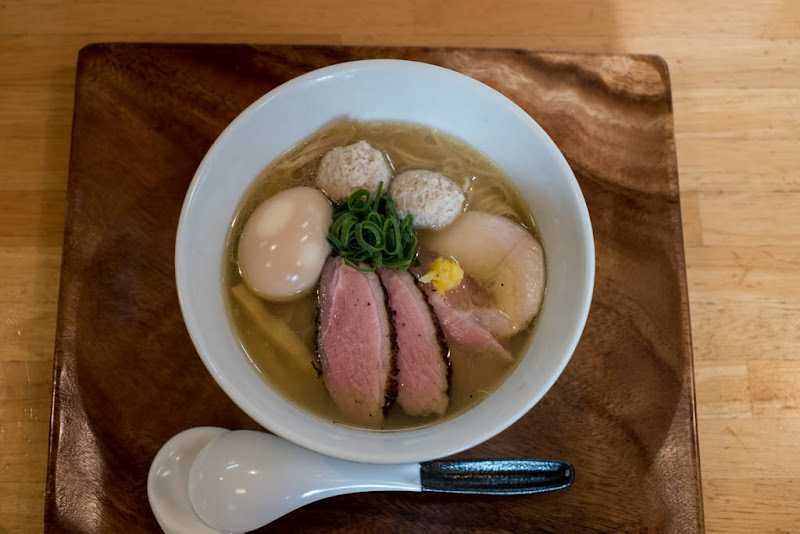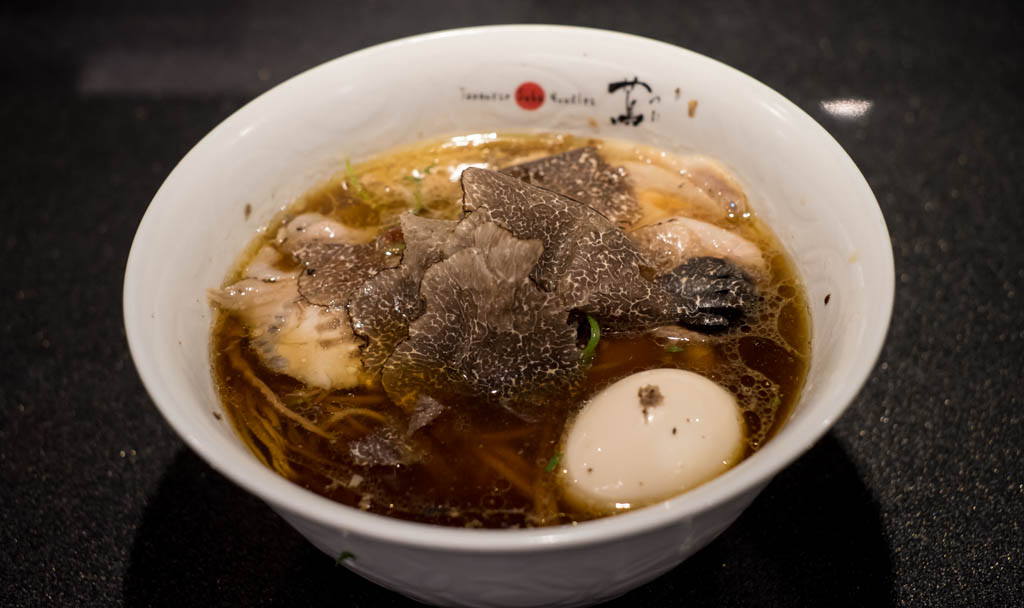Japanese Soba Noodles蔦
"The truffle is not a positive aphrodisiac, but it can upon occasion make women more tender and men more apt to love."
- Jean Anthelme Brillat-Savarin (1852) The Physiology of Taste
Tsuta, the first ramen restaurant in Japan to receive a coveted Michelin star is back in a new location. The menu still features truffle oil-infused shoyu ramen, as well as a few other styles. The new spot is slightly larger to deal with the insane amount of tourists they expected to receive during the now-canceled Tokyo 2020 Olympics. It's also in the much more desirable Yoyogi-Uehara, just a short walk from Yoyogi Park and Shibuya.
Please note that I came during their soft open, so things will be different when you come. I lined up for an hour, but there may be a different reservation system in place when you come.
The menu could be different as well. Chef Onishi-san, like most new-school ramen chefs, is constantly tweaking his recipes and sometimes even adding completely new items to the menu. He also frequently makes limited bowls, so check their website if you are into that sort of thing.
The noodles, though, will probably remain made in house.
Despite the meteoric rise to ramen fame, Tsuta makes a stellar bowl. They pretty much made truffle ramen a thing, and a slew of other shops started putting cheap truffle oil into their soups for a chance at some love from Michelin. It isn't lost on me that the third shop to receive a Michelin Star, Hototogisu, also uses truffles.
Yes, I ordered the shoyu ramen topped with extra shaved truffles. Each style of ramen comes with this option at a rather high cost. Is it worth it? Truffles are purely aromatic, and the amount they put in the standard bowl has almost the exact same qualities as the premium one, at a cost of almost 2000 yen less.
Of course, fresh truffles are different than truffle-infused products like oils, sauces, and butters. I recently read an expose on the shady side of Italy's truffle word called The Truffle Underground.
It paints a bleak image of this industry. I don't want to imply that anything used here is inauthentic, but many truffle products are made without any truffles at all. Pharmaceutical chemicals like bis(methylthio) methane are labeled as truffle aroma, as are boiled down bovine spines.
A paltry 2000 yen for fresh truffles isn't looking so bad now.
Maybe 2000 yen isn't a big deal, or maybe you want to do it for the
Gram. Either way, you are getting their phenomenal soup.
Tsuta has always used ultra-premium ingredients. Top-level, expensive chicken from Aomori and konbu from Hokkaido. Specifically, Aomori Shamo chicken (青森シャモロック), massive Amakusa Daio chicken (天草大王), meaty Kuroiwa chicken (黒岩土鶏), and everyone's favorite Nagoya Cochin chicken (名古屋コーチン).
I crushed the ramen at this new spot with fervor.
Actually, Tsuta was one of my favorite shops back in the day. I worked in the area of their old shop at a girl's high school, a job that I really didn't have my heart in at times. After a stressful day, I would walk back towards Sugamo Station and wait in the modest 30-minute line for a bowl. When they received the Michelin Star I went once more, skipped to the front of the 2-hour line to offer my congratulations, and went home without eating. I went back once to film one of my most popular
YouTube videos ever, but that was it for Tsuta and me.
The new spot is a 5-minute bicycle ride from my home, so I'll probably roll by now and then. I hear, even during popular tourism seasons, they don't have a line in the evening.
Welcome to the Wonderful World.
Official site
here. Onishi-san's blog is
here.

















































